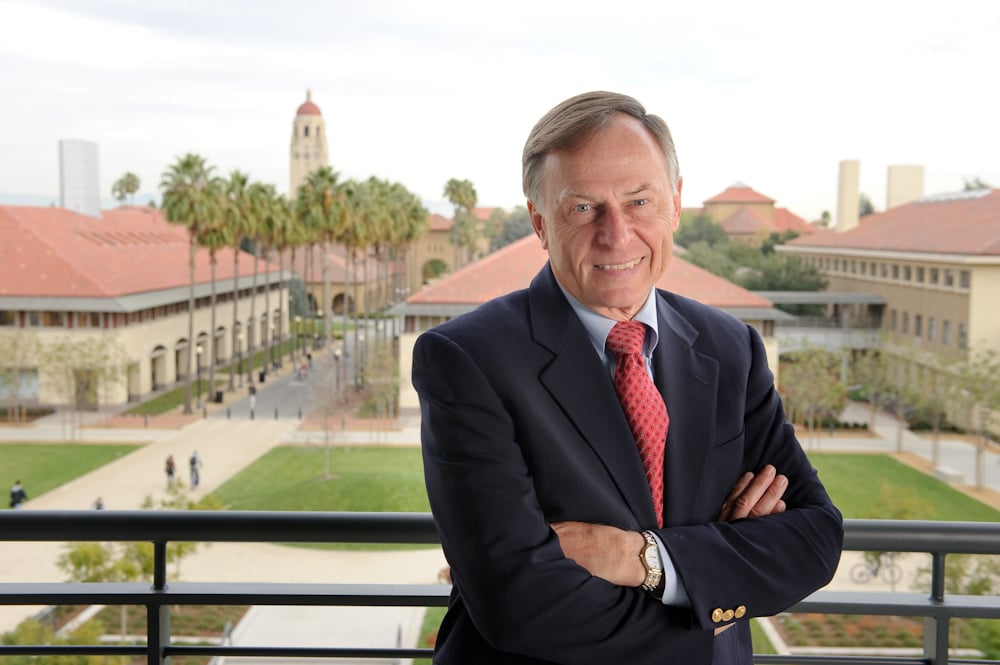
Jim Plummer M.S. ‘67 Ph.D. ‘71, dean of the School of Engineering, recently announced that he would step down from his position after a 15-year tenure.
Plummer has led the School of Engineering since 1999, prior to which he was the senior associate dean and chair of the Department of Electrical Engineering. Plummer’s time as dean saw rapid growth of Stanford facilities and research, including the construction of the new Sciences and Engineering Quad.
Plummer sat down with The Daily to reflect on his time as dean and talk about his plans for the future.
The Stanford Daily (TSD): When you first took the job of being the dean, what was the first thing that went through your mind? Looking back on that, how has your view of the school changed?
Jim Plummer (JP): I’ve been at Stanford for a long time—I was in the dean’s office, I was senior associate dean for a few years before I was dean, so I had a pretty good idea of what the dean’s office was all about. I was also a professor and a department chair.
Anyone who walks into this position walks into a position where the school is well respected and well positioned, and [it] recruits great faculty and students. It’s a position where you’re not exactly at the top of the mountain, but very close to the top of the mountain. It’s more of an opportunity to see what you can do to make it better than what it already is.
TSD: During your time as dean, when the engineering quad was built, did you see a change in the mindset of anyone in the School of Engineering, and in the type of work that was going on?
JP: There’s actually been a goal for around 20 years in the School of Engineering to try and get all of our nine departments into 21st-century facilities. This quad [the Science and Engineering Quad] finishes something that has been underway for more than 20 years. It positions our departments to do 21st-century research and have some of the best teaching facilities around.
TSD: Do you think that the new quad has affected the vast increase in the number of undergraduates pursuing engineering?
JP: I think a number of factors contributed to that, and this is certainly one of them. Another factor that contributed to that [increase in the number of students] was that we, along with the rest of the University, have paid a lot of attention to things like freshman seminars and introductory classes. We have also paid a lot of attention to our undergraduate majors.
Probably the best example of that is computer science (CS), which completely redid its undergraduate curriculum four to five years ago. That was the point at which the number of undergraduate majors took off in CS, and now it is the largest undergraduate major on campus.
It’s a combination of wonderful new facilities, and the fact that a lot of young people nowadays really want to have careers that change the world—they want to work on energy or environment or human health problems, something which is going to make a difference in the world.
I think that increasingly young people are connecting the dots and seeing that in order to do that, having the technical skills to be able to contribute to those [solutions] is a good idea. Engineering provides those skills.
TSD: If you were an undergraduate today at Stanford and were planning on pursuing engineering, what would you do?
JP: I get asked that question a lot. My usual first answer to it, which is the most important thing by far, is to learn a bit about different areas of engineering and find out what you are really excited about.
You need to find something that inspires you, which you’re passionate about, and then pursue it. If you do that, then you’re probably going to be wildly successful at it, and it will position you to learn the kinds of skills you will need for a career going forward.
TSD: Do you have any advice for the incoming dean?
JP: My advice, above all else, would be to make sure that you are well attuned to the ideas that are building up from our faculty and from our students, because no individual is as smart as the collective intelligence of 250 faculty and several thousand students.
The best ideas are going to come from that group and probably not from whoever sits in this office. So, whoever sits here can listen and learn, and help pick out what seem to be the best ideas and enable them to happen.
TSD: What are your plans after this?
JP: I am just beginning to think about what I might do. So, I see it as a time of renewal, and with this job I haven’t been as active in research over the last 14 going on 15 years than I was, so for sure, I am going to dig back into technical fields.
Contact Nitish Kulkarni at nitishk2 ‘at’ stanford.edu.
